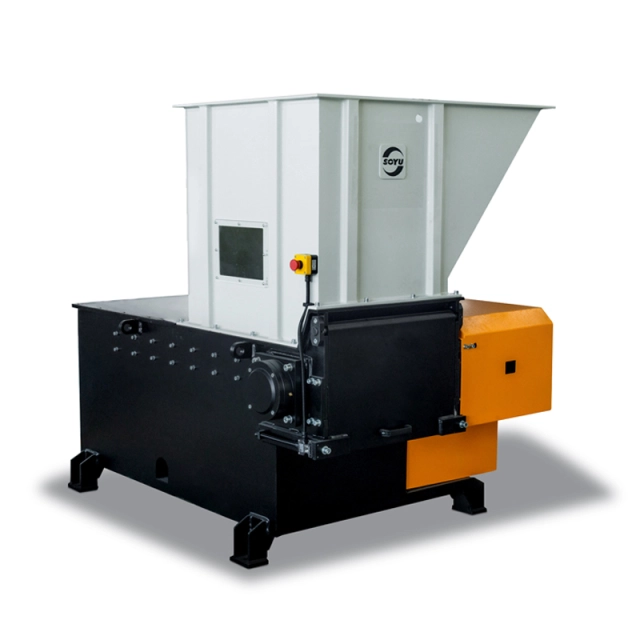How to Choose the Right Shredder for Your Business Needs
Selecting the ideal shredder for your business can feel like a daunting task, given the variety of options available. But with the right guidance, you can find a shredder that perfectly matches your operational needs. This guide will help you understand the different types of shredders, their key features, and how to choose one that’s right for your business.
Table of contents:
Key Features to Look for in a Single Shaft Shredder
Understanding the Differences Between Single, Two, and Four Shaft Shredders
Factors to Consider When Selecting a Shredding Machine
Tips for Assessing Your Material Processing Requirements
Key Features to Look for in a Single Shaft Shredder
A single shaft shredder is well-suited for reducing bulky materials into small, consistent particles. These shredders are equipped with a pusher system and rotary blades that help achieve the desired material size, which is controlled by the screen mesh hole size. The mesh size ranges from 40 to 100mm, making it suitable for a variety of materials. When considering a single shaft shredder, look for features like a "V" arrangement rotor with double side edge cutters, which prevent material build-up. The rotating blades made from high alloy wear-resistant steel ensure longevity and robust performance. Additionally, an adjustable fixed blade allows for a broader shredding range, enhancing versatility and accommodating harder materials.
Understanding the Differences Between Single, Two, and Four Shaft Shredders
When choosing a shredder, it's essential to understand the distinctions between single, two, and four shaft shredder. Single shaft shredders are ideal for materials with minimal metal content, like plastics, paper, and wood. They provide consistent particle sizes and are easy to maintain. Two shaft shredders, on the other hand, are designed for tougher materials and larger loads, offering improved cutting force and torque. These shredders are commonly used for industrial applications where robustness is required. Lastly, four shaft shredders provide the most comprehensive shredding solution, handling complex materials and offering secondary shredding for finer particle sizes. They are well-suited for processing heavy-duty materials like metal and electronic waste.
Factors to Consider When Selecting a Shredding Machine
Several factors should guide your decision when selecting a shredding machine. First, consider the type and volume of materials you need to process. This will determine the shredding capacity and the number of shafts required. Next, assess the desired particle size and whether the shredder offers adjustable screen sizes to achieve this. Another key consideration is the machine's power and torque, which influence its ability to handle hard or voluminous materials. Additionally, consider the ease of maintenance and availability of replacement parts, as these will impact the long-term cost-effectiveness of the shredder. Lastly, evaluate the safety features and compliance with industry standards to ensure safe operation.
Tips for Assessing Your Material Processing Requirements
To effectively assess your material processing requirements, start by analyzing the types of materials your business handles regularly. Are they soft, hard, bulky, or consist of mixed materials? This analysis will guide you in choosing the correct shredding technology. Next, evaluate the volume of material that needs processing within a set timeframe, which will help determine the capacity and speed of the shredder. Consider the desired end-product size, as this will influence the choice of mesh screen size. Lastly, consult with experts or manufacturers who can offer insights into the most suitable shredding solutions for your specific needs and business goals.
Choosing the right shredder is crucial for optimizing your material processing operations. By understanding the features of single shaft shredders and comparing them with two and four shaft options, you can make an informed decision. Consider the factors that impact your shredding needs, and remember that assessing your material processing requirements is key to selecting the best shredder for your business. For further assistance or customized solutions, don't hesitate to reach out to industry experts who can guide you through the selection process.

Comments
Post a Comment